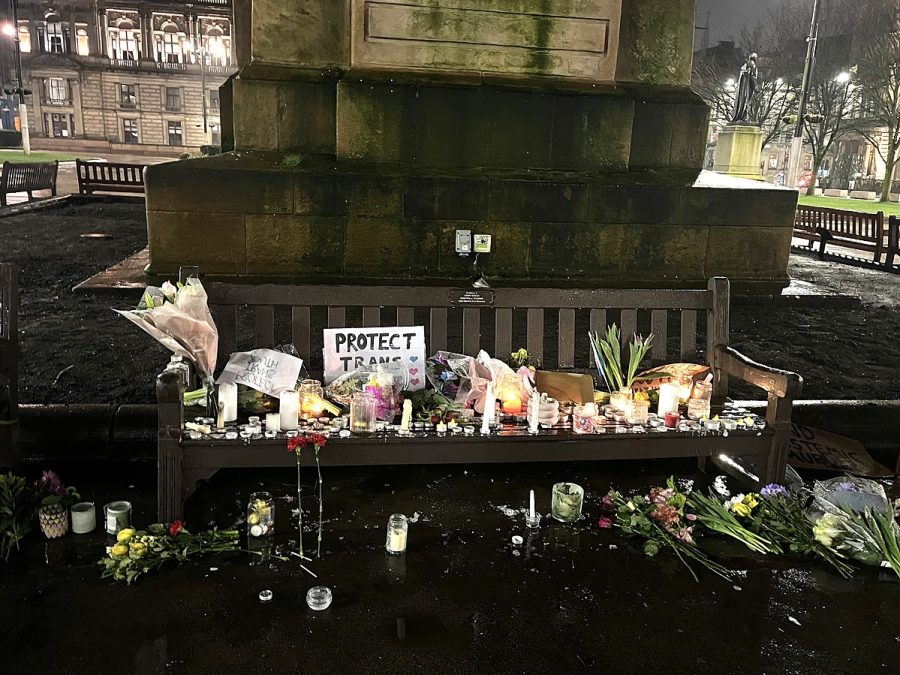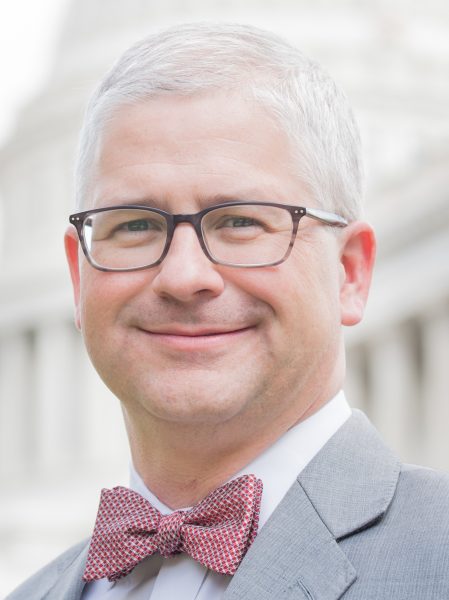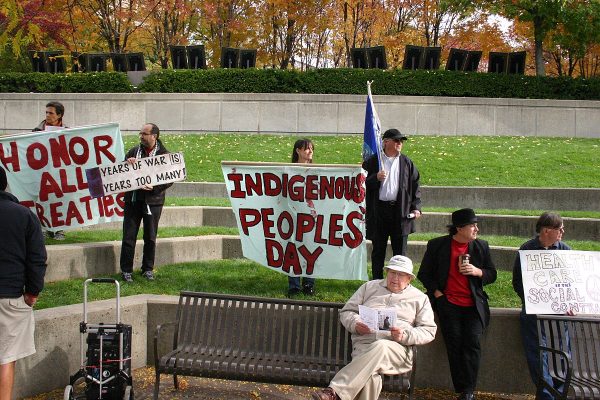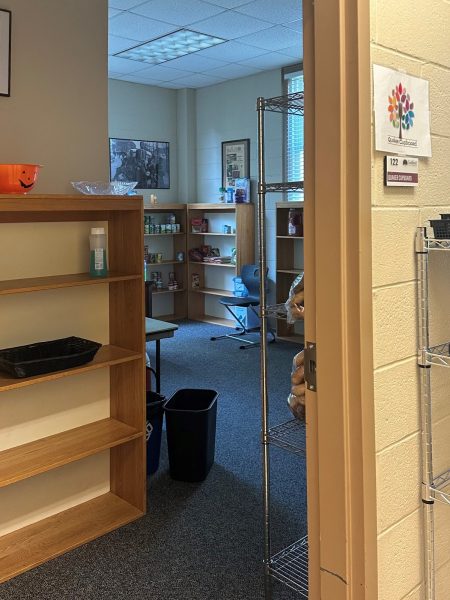Why does the media have trouble covering transphobic violence?
Examining outcomes of disparities in coverage of violence against trans people.
Benches in Glasgow Square were covered with candles and flowers in honor of Brianna Ghey, a victim of transphobic violence.
Brianna Ghey was 16 years old, and according to her family, she was “beautiful, witty, and hilarious.”
“She was a larger than life character who would leave a lasting impression on all that met her,” her family said in a statement to police in Cheshire County, England. “(She) was a much loved daughter, granddaughter, and baby sister.”
On Feb. 11, in broad daylight, Ghey was tragically stabbed to death in Linear Park in Culcheth, England. Two 15-year-old suspects have been arrested in the case, but questions about the motivations behind her death remain unanswered.
“A number of inquiries in relation to this incident are underway,” Detective Mike Evans told The Telegraph of London. Those inquiries include whether the murder, described by police as a “targeted attack,” was a hate crime.
Ghey was a transgender teen using she/her pronouns. She had begun her social transition months before her death, documenting her journey on TikTok.
The final video she posted shows her dancing and walking in Linear Park. Filmed days before her death, she captioned the post that she was giving life “one last try.”
Before her death, Ghey was a victim of transphobic bullying. Damian Harry, the father of one of her friends, told the London-based Daily Mail that Ghey “was devastated by the constant abuse and even talked of ending it all…her dad has said he raised safeguarding at the school a thousand times. But little was done. The abuse was constant all because she was different.”
Ghey is just one of many victims of violence against trans people this year. According to the Human Rights Campaign, an LGBTQ advocacy group, in the first two months of 2023, four known trans people have been killed in America: Jasmine “Star” Mack, KC Johnson, Unique Banks and Zachee Imanitwitaho. None of them, especially Mack and Imanitwitaho, who were Black, and Banks, who was Latina, have received as much publicity as Ghey, a white person.
Data shows that violence against trans people frequently goes uncovered, particularly because news outlets misgender almost two-thirds of trans murder victims, according to a 2020 study by Media Matters for America. But even less coverage is afforded to trans people of color, who are overwhelmingly the victims of hate-motivated murder, mutilation and rape.
Ghey’s death has been regarded as brutal, needless and horrific. She and her family deserve all the coverage and support they have received, if not more. However, Ghey was white, not Black or brown like Imanitwitaho, Mack and Banks, and from an affluent family.
To a media still largely controlled by white cisgender people — according to statista.com, in 2018, 84 percent of workers in the U.S. publishing industry were white — a young, white trans girl seems to attract more sympathy than the dozens of trans people of color whose deaths go unreported or unnoticed.
Ghey is the type of trans teen who typically lives, not the type to be murdered as she was. According to the Human Rights Campaign 2022 annual report, of the 32 trans people killed in the U.S. in 2022, 81 percent were people of color. But despite the high likelihood of violence, murdered trans people of color consistently receive far less coverage than their white counterparts.
The level of attention, donations and compassion that white trans victims of violence receive should be afforded to every dead trans person, regardless of whether they fit some abstract media narrative of a “good” or “real” victim. Ghey’s murder has received an unprecedented amount of coverage for a murder of a trans person, which is regarded as a promising step towards respect and justice for trans people in society and the media.
Increasing awareness of the violence trans people face can help lay the groundwork for systemic change, but many are calling for the media to strive to match, or even surpass, the amount of coverage they afford to white trans people for all trans victims of violence.
Less coverage equals less awareness, less sympathy, less money to GoFundMes or charities and less support for the families left behind by the dead.
Trans people of color are killed, misgendered in the news and on their death certificates and then forgotten. Their families often are left without justice, sympathy or support. Outpourings of empathy and outrage are more frequently reserved for white trans people, who better fit the narrative of senseless victimization.
The death of any trans person is and should be a tragedy. The hundreds of thousands of dollars in donations, the thousands of articles and the ruthless investigations should be the norm for every trans person who is cruelly and needlessly taken from the world, not an exception.
Many assert that it should be the media’s job to bring awareness to violence against trans people in a sensitive, effective manner. By conducting thorough investigations of the victims before publishing information, media outlets can avoid misgendering them or erasing their trans identities.
Boosting more trans voices and conferring with trans people, especially trans people of color, will help ensure productive coverage that breaks the cycle of unpunished violence perpetuated by media silence.
In media coverage regarding the deaths of trans people, there should be equality, parity and justice. One reason why trans people of color are disproportionately victims of violence is that there is less news coverage, less investment in police investigations and less outrage.
There is less to stay the hand of transphobic murderers who are convinced of the inhumanity of the trans people they kill, and convinced that their crimes will go overlooked and unprosecuted.
When every murdered trans person receives as much media coverage and public support and outrage as Brianna Ghey did, the hatred that claims dozens of trans people’s lives every year will be met with such a volume of love for the victims and their families that this hate will be fully recognized as unacceptable, as it needs to be.
The attention and coverage can then be translated into legal protections for and solidarity with the trans community, and never again will a trans person’s death be allowed to go unnoticed and uncovered.











